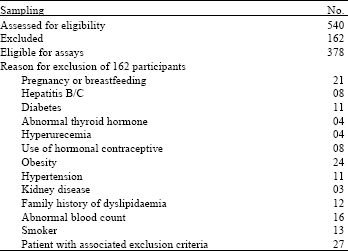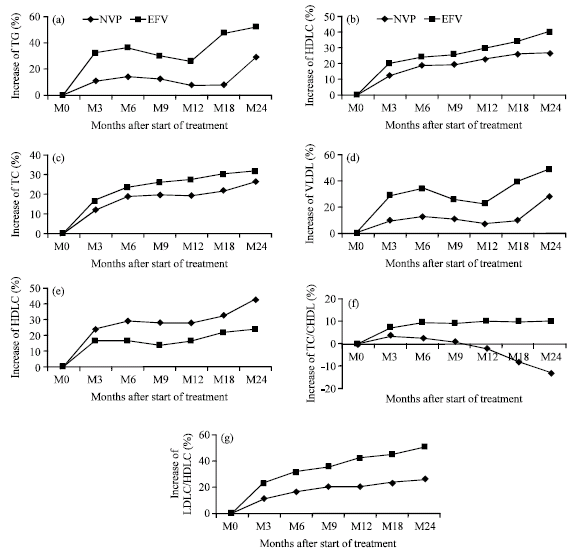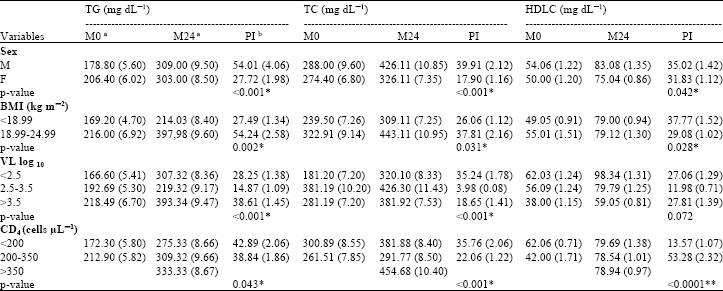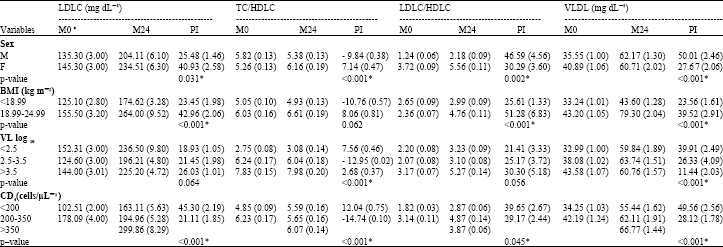Research Article
Changes in Lipid Profiles in Two Groups of HIV-1 Infected Patients in Cameroon on Two Treatment Regimens with Either Efavirenz or Nevirapine, in Association with Reverse Transcriptase Inhibitors
Faculty of Medicine and Biomedical Sciences, University of Yaounde I, Yaounde, Cameroon
J. Mbuagbaw
Faculty of Medicine and Biomedical Sciences, University of Yaounde I, Yaounde, Cameroon
T. Nkoa
Faculty of Medicine and Biomedical Sciences, University of Yaounde I, Yaounde, Cameroon
G. Teto
Faculty of Medicine and Biomedical Sciences, University of Yaounde I, Yaounde, Cameroon
G.R. Njitchouang
Faculty of Medicine and Biomedical Sciences, University of Yaounde I, Yaounde, Cameroon
D.J. Pouomogne
General Biology Laboratory, Faculty of Science, University of Yaounde I, Yaounde, Cameroon
A. Same-Ekobo
Faculty of Medicine and Biomedical Sciences, University of Yaounde I, Yaounde, Cameroon
T. Asonganyi
Faculty of Medicine and Biomedical Sciences, University of Yaounde I, Yaounde, Cameroon














